A Famous WWII Flying Boat Is Making a Legitimate Comeback for Modern War
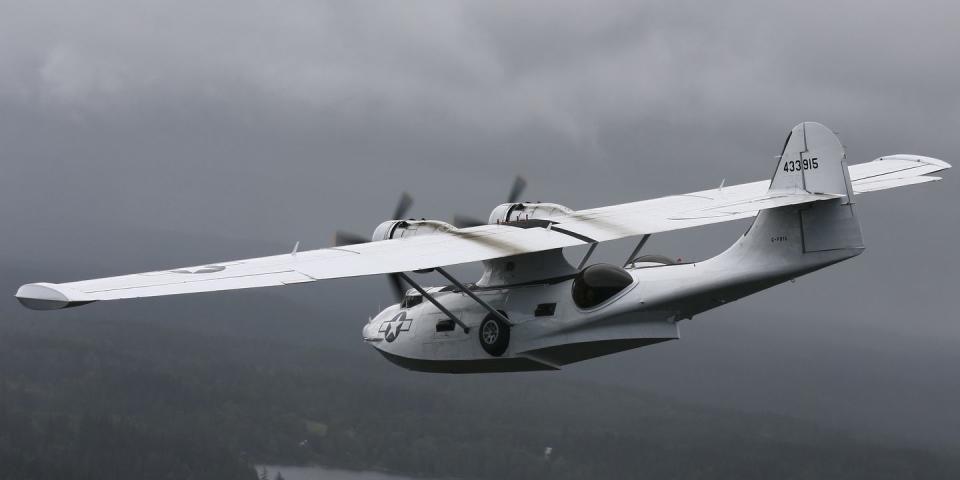
Imagine if you were able to restore to factory production any of the classic combat aircraft of World War II. Even given some modest modernizations, could any of those venerable warbirds have viable niche in commercial or military service 80 years later?
The team at Florida-based Catalina Aircraft believes that the answer is yes—at least when it comes to the legendary Catalina amphibious flying boat. On July 25, 2023, the company announced that it was planning to start production on brand-new Catalinas outfitted with modern turboprop engines and cockpit displays.
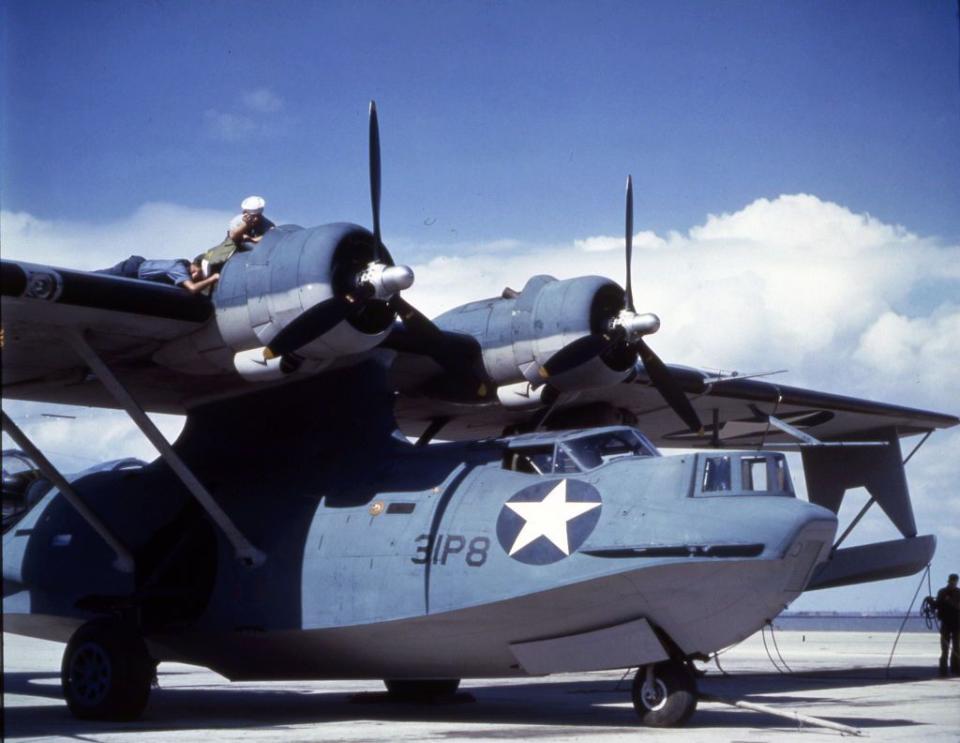
The Consolidated Catalina—technically designated the Model 28 at its inception, and the PBY in U.S. Navy service—led an impossibly varied and successful career in World War II. It was operated by all major Allied military powers as a far-flying maritime patrol plane, long-range torpedo and land attack bomber, mine layer, submarine hunter, search-and-rescue plane, special operations transport, and cargo-hauler. More than 4,000 were built in the United States, the Soviet Union, and Canada—where it also served under the name ‘Canso.’
By one count, 14 to 17 airworthy Catalinas and Cansos remain as of mid-2023, with at least 7 more under restoration to flyable condition and many more in storage or on display.
Founded in 2009, Catalina Aircraft holds the type certification for the venerable aircraft, and presently services airworthy Catalinas and restores non-flyable ones to airworthy condition. Its website lists three aircraft that it has restored to Transport Category status.
The firm informed Popular Mechanics that it already has a lead customer, and is soliciting additional pre-orders for its proposed Next Generation Amphibious Aircraft (NGAA)—or Catalina II—which it says it could begin delivering by 2029 in both civilian and special purpose configurations.
Popular Mechanics reached out to Catalina Aircraft: Was the company really planning to build brand-new planes?
“The Catalina II is a new production aircraft. We are not refurbishing and upgrading old birds in the turboprop effort,” a company representative replied in an email. “Our initial flight test bird will be a product-modification of an existing aircraft to prove out initial design concepts. Production flight test may include as many as 6 test vehicles, 3 for each variant [civil and military]. We are expecting to start turbine-powered [ie. turboprop] flight tests in 2025 with new production deliveries beginning in 2029.”
As for the factory, “We have several locations [in] the continental United States offered, as well as one outside the continental United States location we are considering. It’s all about space and the bottom line.”
As the Catalina is an established design with a pre-existing Type Certificate, Catalina Aircraft maintains that it can be put back into production more cost effectively than a new design—even with modernizations.
“These variants will be added to the existing Type Certificates as Variant Additions (similar to what every other manufacturer has done in the past). However, there are limits on how much we are permitted to “change” without creating what would be perceived as a new design effort requiring a more extensive certification program. The design efforts and mods we propose will still require certification as well as flight test, all under Part 25 [FAA Airworthiness Standards: Transport Aircraft].”
The regulatory hurdles facing entirely new designs, by contrast, render development impractical in the company’s estimation:
“Any proposed ‘new’ design efforts with a new and complete certification program will take significantly longer than a variant addition certification program and will [cost] in the billions, driving breakeven points to an unacceptable ROI timeline. This is why no one has built an all new Large Category seaplane. The economics say don’t do it...”
A key feature that the Catalina brings to the table is supportability, per the company:
“The original Cats were very supportable and we are carrying those same features though to the new variants. Acquisition of a platform is easy. Maintaining it is a different story. Operators need to be able to keep Ao [operation availability] up high. For the military type customer, unit level BDAR [Battle Damage Assessment and Repair] is also an important consideration we are carrying forward.”
Like the later-production PBY-5A and PBY-6A model Catalinas, the Catalina II would be amphibious—coming with both landing gear to operate from land and a hull that can float on water.
In its pitch, the company emphasized that hulled seaplanes are preferable to installing wing-mounted pontoons on land-based aircraft—pontoons can be fragile, handle choppy waters less well, and have greater negative impacts on aerodynamics.
A Tale of Two Catalina IIs
The company argues the Catalina II’s categorization as a large, boat-hulled amphibian would fulfill a unique niche—able to fly farther carrying heavier cargo than possible with smaller, converted float planes.
At the same time, the Catalina II would be smaller and than the US-2 seaplane in service in Japan, and would allegedly cost one-fourth or one-fifth as much to procure.
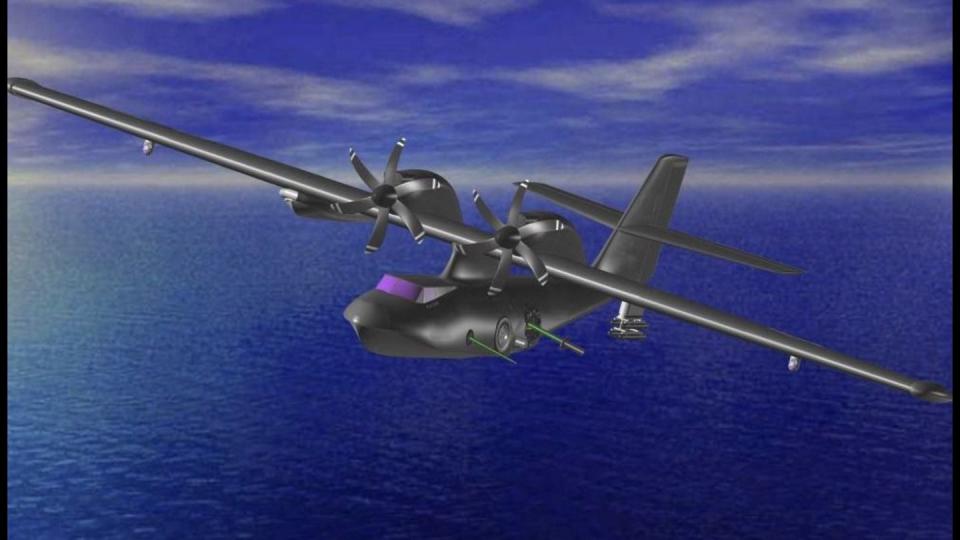
The most important change in the Catalina II involves swapping out the original two Pratt & Whitney R-1830 Twin Wasp piston engines mounted on its parasol wing for turboprops, which are more efficient at higher power and more reliable.
It’s worth noting that Canadian firm Avro considered developing a ‘Turbo Canso’ powered by Rolls-Royce Dart turboprops, but wasn’t able to follow through. Catalina Aircraft’s concept art shows a five-bladed turboprop resting atop the wing rather than nested inside it like the original Twin Wasps.
The two variants will both feature new retractable wingtip floats, four-segment touchscreen cockpit displays compatible with night vision goggles, interlocks to prevent mistaken simultaneous deployment of landing gear and floats, construction from corrosion-resistant materials, and components in common with other in-service aircraft to ease parts availability.
The Civilian Variant is said to have a range of over 1,750 miles when using sustainable fuel, thanks to new high fuel-efficiency turboprops, and is pegged at a cruise speed of 213 miles per hour—a 70% increase over a PBY-5A.
Its maximum takeoff weight of 16 tons can accommodate for up to 34 passengers with luggage, or 6 tons of internal cargo, or carriage of two air-droppable dinghies. It can operate in a “light breeze” with wavelets cresting at 6 inches.
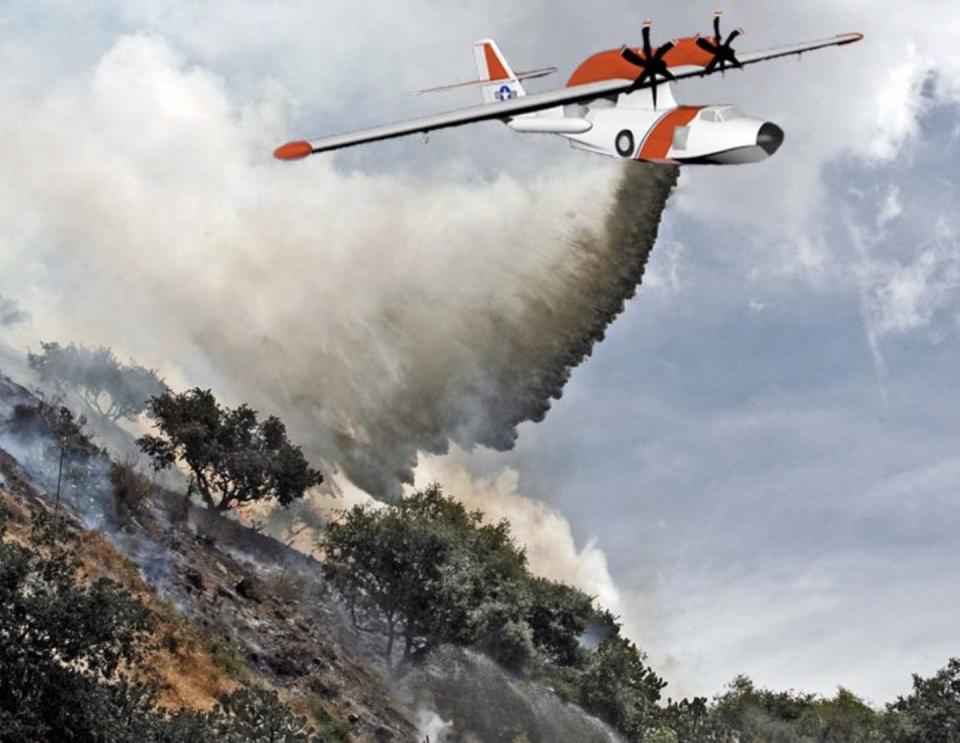
The beefier proposed Special Use Variant is aimed primarily at government and military operators, and would be certified for operations at up to a “gentle breeze” causing waves that crest up to 2 feet. This model would feature uprated turboprop engines that would allow for cruising at up to 230 miles per hour, and a redesigned Very Low Stall wing that would allow for a lower minimum speed of 71 miles per hour.
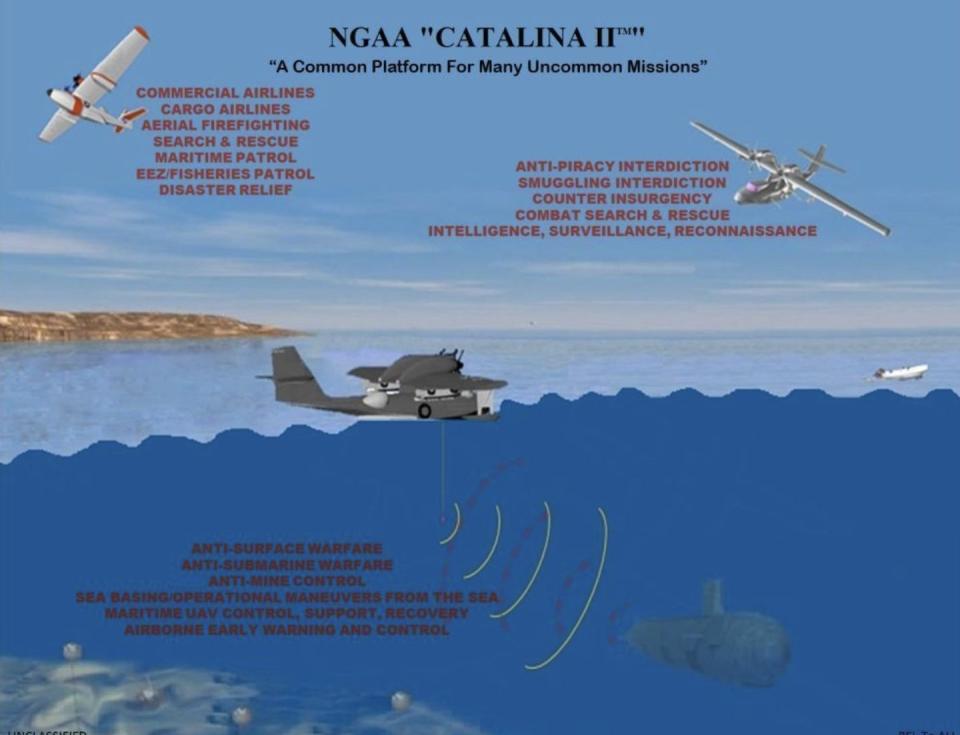
This variant would have an increased max takeoff weight of 20 tons, and an airborne endurance of 19 hours drawing from 2,710 gallons of fuel. Potential payloads include water-bombing equipment, up to 30 fully equipped soldiers, and eight tons of internal cargo (potentially supplemented by a further 2.5 tons storable under the wings). The latter opens up potential mission payloads such as sensor pods, air-dropped boats, or missiles and lightweight anti-submarine torpedoes. The company’s website also implies that this variant could be converted into an optionally uncrewed or pure drone configuration.
Both models can be converted by removing the landing gear to save weight and serve as a ‘pure’ flying boat.
The company wrote to Popular Mechanics that it has received “significant interest in both the civilian and special use variants,” and has reportedly both narrowed down the engines and avionics under consideration and selected propellers. However, it will wait to unveil those choices until the fourth quarter of 2023, when the company announces its launch customer.
Why Seaplanes, and Why Now?
It’s hard to overstate the scope of the Catalina’s impact on the Battle of the Atlantic and the Pacific War during World War II—and that’s despite the fact that the Catalina served alongside noteworthy rivals like the RAF’s Short Sunderland and planned successors like the PBM Mariner and P5M Marlin.
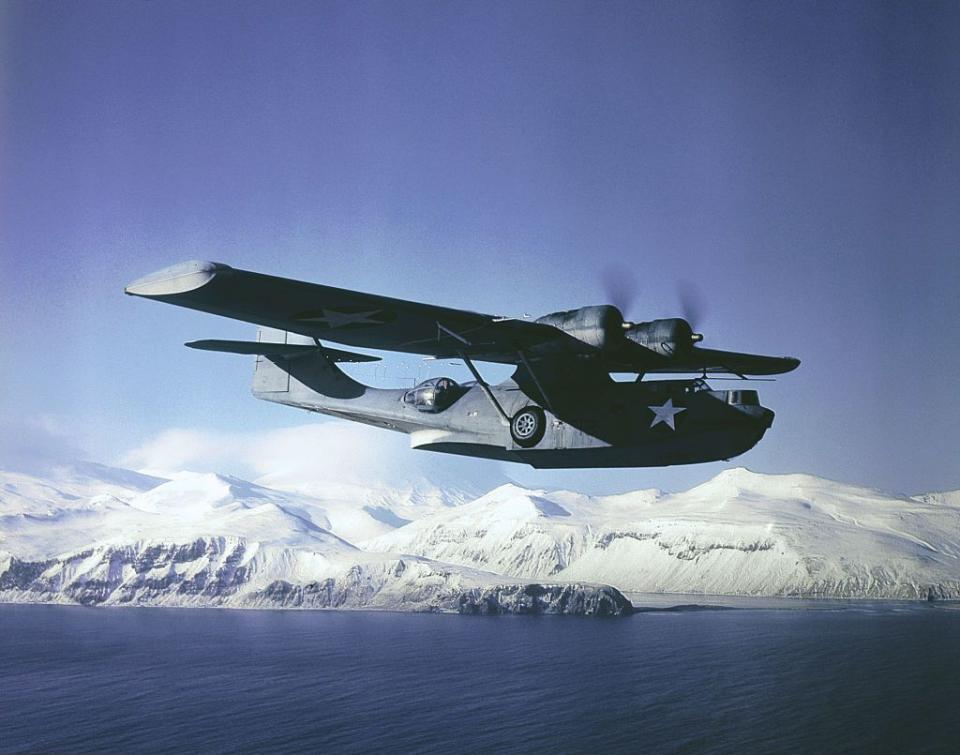
Fleet scout, commando inserter, submarine hunter, night raider, torpedo bomber, search and rescue savior, cargo hauler—the Catalina did it all. It was undeniably poky, with a cruising speed of 125 miles per hour, but it could traverse over 2,500 miles in one go and didn’t even need an airstrip at the end.
Catalinas helped hunt down the notorious Nazi battleship Bismarck, initially spotted the approaching Japanese fleet during the Battle of Midway, rescued hundreds of airmen and shipwrecked sailors in the Atlantic and Pacific, astonishingly scored the U.S. Navy’s first air-to-air kill of the war, and was the last Royal Air Force plane to sink a U-Boat (Allied Catalinas sank around 40, all-told). Heck, one even saved Tom Hanks in the war film Greyhound!
And for decades after that conflict, Catalinas served on in military and civilian roles.
But despite their critical roles in World War II, flying boats and amphibious aircraft rapidly fell out of fashion in the second half of the 20th century—longer landing fields and long-distance airliners and transport planes proliferated, and helicopters helped address access challenges at shorter distances.
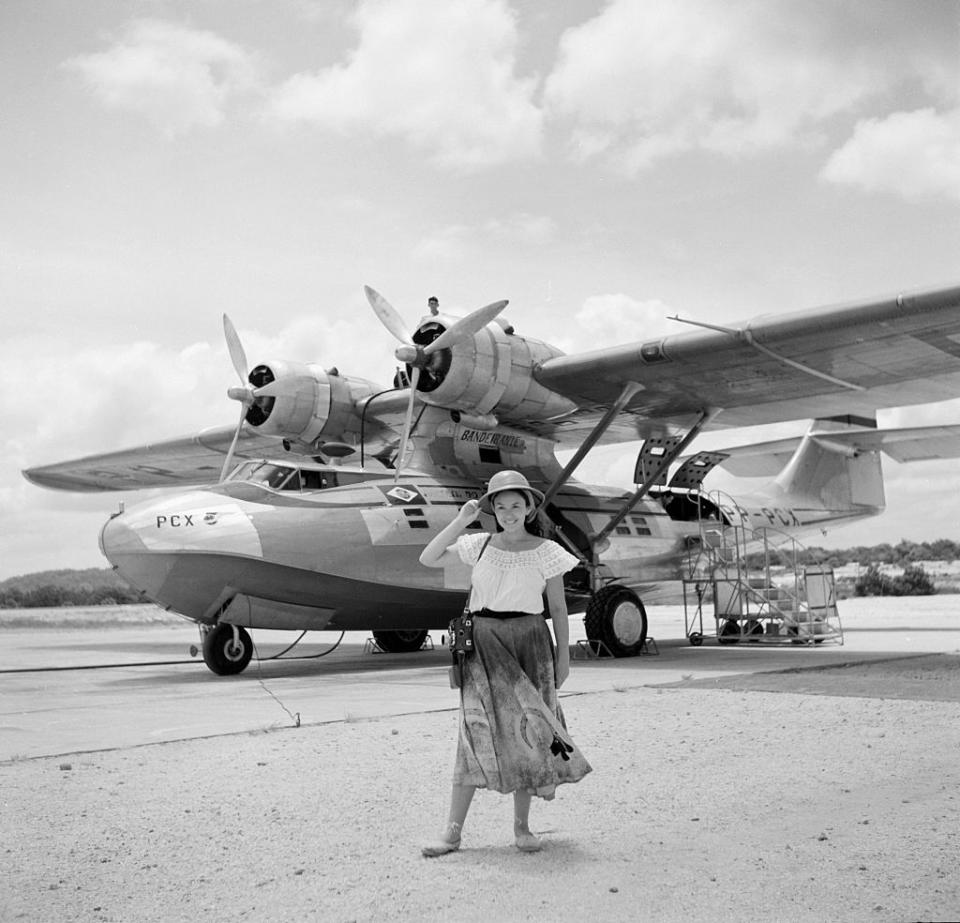
However, since military competition between the United States, China, and Russia in the Pacific and Arctic Oceans began heating back up in the 2010s, there’s been renewed interest in seaplanes for their potential to traverse very long distances so as to resupply and operate from remote island bases. Such bases are increasingly used to assert territorial claims in contested waters like the South China Sea, and in an actual armed conflict, may be used to host surveillance systems and long-distance anti-air and anti-ship missile batteries to constrain an opposing force’s freedom of maneuver.
The U.S.’s Special Operations Command already plans to test a float-plane variant of the MC-130J Commando II special ops transport by 2026. The Pentagon’s advanced research agency is also looking at proposals for a ‘Liberty Lifter’ ground effect seaplane that would be able to carry up to two Marine amphibious combat vehicles across transoceanic distances in moderate wind and slightly choppy waters.
China, meanwhile, has been testing prototypes of its new AG600 Kunlong amphibious flying boat.
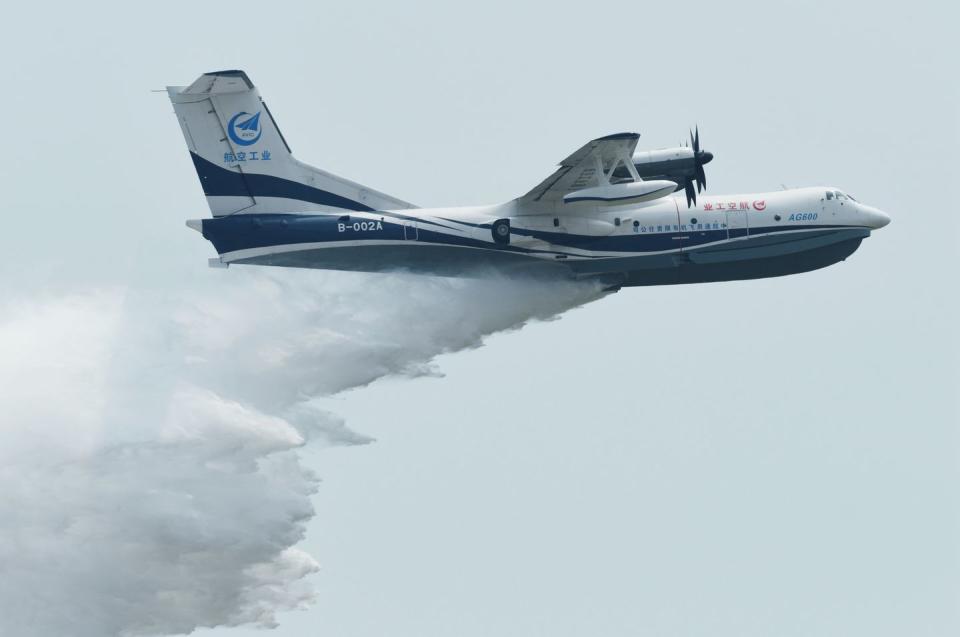
Japan’s armed forces alone, however, maintain a modern seaplane firmly in operational service—the ShinMaywa US-2. It also attracted interest from potential export clients, though production appears to have halted, at least temporarily.
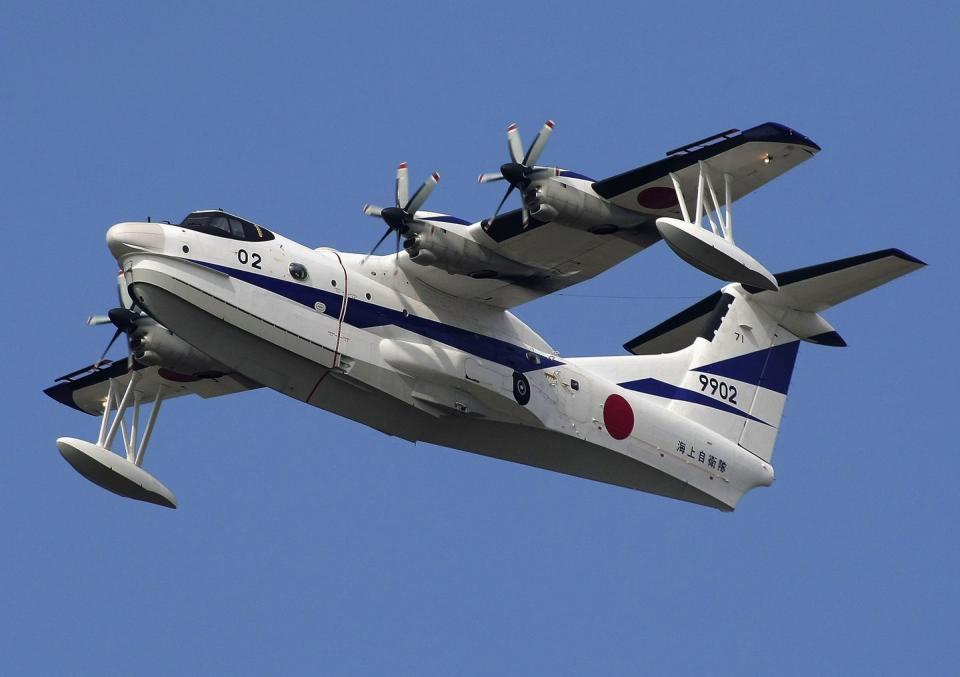
Another factor affecting civilian and military demand are rising sea levels linked to global warming, which will create natural disasters and attendant access problems for responders. As rising temperatures cause more out-of-control fires, seaplanes also have appeal as water bombers, seeing as they can readily scoop up large volumes of water simply by skimming low over the water.
Catalina Aircraft lists stocking of fisheries, ambulance, cargo and passenger transport, humanitarian aid and emergency response, postal delivery, offshore facilities support, and VIP transport as use cases for the Catalina II civilian model.
The beefier Special Use model is suggested for waterbombing, maritime search and rescue, coastal/maritime patrol, cloud seeding, mosquito control, and weather observation (“hurricane hunters”). Proposed purely-military applications range from combat roles (anti-submarine and anti-surface warfare) and combat search and rescue and submarine emergency evacuation) to logistics (aerial refueling, bulk fuel delivery) and cold weather insertion.
Despite such diverse possibilities, even an upgraded Catalina has limitations. In military service, it would have to operate outside of contested airspace due to its slow speed and lack of stealth—though, that’s less problematic for roles such as counter-mine and anti-submarine warfare. Furthermore, civilian and military operators alike would have to accept the type’s lack of cabin pressurization and slow transit speeds, even when boosted by turboprop propulsion.
In terms of competition, the Catalina II faces the larger, faster, and heavier-lifting Japanese US-2 and possible float-equipped MC-130—and for civilian use, the planned De Havilland DHC-515 Firefighter, successor to the CL-415 turboprop-engine amphibious waterbomber, with comparable range and engine configuration.
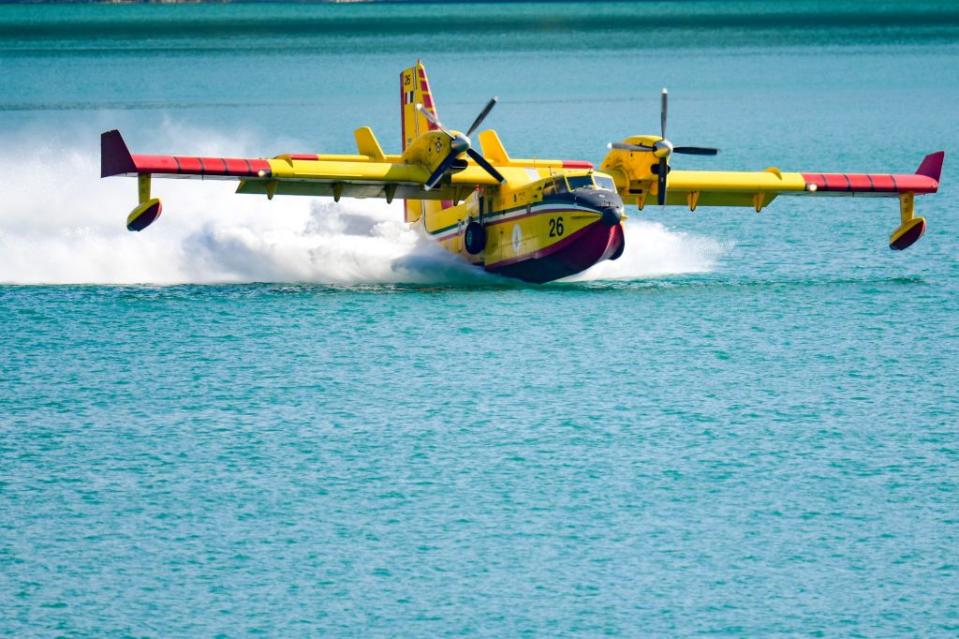
Catalina Aircraft stated in an email, however, that neither of these aircraft is, to their knowledge, in active production—nor were they certified to carry civilian passengers for hire. They also claim that the US-2 lacks any western certification period.
While the company is holding back on announcing its pricings, it did also comment that the US-2 is “4-5 times the acquisition expense” of the Catalina II. A 2016 article claims the US-2 had been offered to India at a per-aircraft cost reduced from $133 to $116 million per plane.
The Catalina II thus appears envisioned to compete in terms of procurement costs, reliability, and operating costs, all while filling operational niches that do not require the largest and most expensive float/amphibious solutions. It also reportedly should go further than existing short-range float planes and vertical lift-capable assets like the MV-22 Osprey.
Time will tell if Catalina Aircraft succeeds in resurrecting a World War II legend in the 21st century. According to the company, more specifics will be announced later in 2023 when they reveal their lead customer—so expect to hear more about the revenant seaplane this fall.
You Might Also Like

 Yahoo Finance
Yahoo Finance 